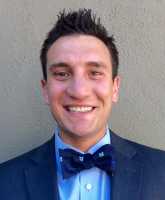Abuse and Neglect, Brain Injury / 24.07.2019
Sense of Smell Can Be Knocked Out By Traumatic Brain Injury
MedicalResearch.com Interview with:
Fanny Lecuyer Giguère, PhD candidate
Centre de Recherche en Neuropsychologie et Cognition (CERNEC)
Université de Montréal
MedicalResearch.com: What is the background for this study? What are the main findings?
Response: Previous work on moderate-severe traumatic brain injury (TBI) showed clear olfactory impairments (OI) months and years after the trauma. Within these impairments, hyposmia (partial loss of smell) and anosmia (total loss of smell) were the most described OI. Moreover, TBI patients with OI generally developed more long-term anxiety and depression symptoms, when compared to patients without OI. Almost no study evaluated such impairments after a mild TBI, which is none to be the most prevalent form of TBI (80% of all TBI).
We evaluated quantitative olfactory scores, post-concussive symptoms, anxiety and depression, within the first 24 hours and one year after the trauma, on a cohort of 20 mild TBI patients and compared these results with a 22 patients control orthopaedic group. Results showed that, within the first 24-hour post-trauma, more than 50% of the mild TBI patients had clinical sing of reduced olfactory capacities (hyposmia) compared to only 5% (1 patient) within the control group.
Consequently, patients with mild traumatic brain injury had lower olfactory threshold and had more difficulty to discriminate and identify different odors. Also, when comparing the mild TBI patients with OI (OI+) to the mild TBI patients without OI (OI-), we realized that OI+ mild TBI patients reported more anxiety and post-concussion symptoms 1 year after the trauma. (more…)














